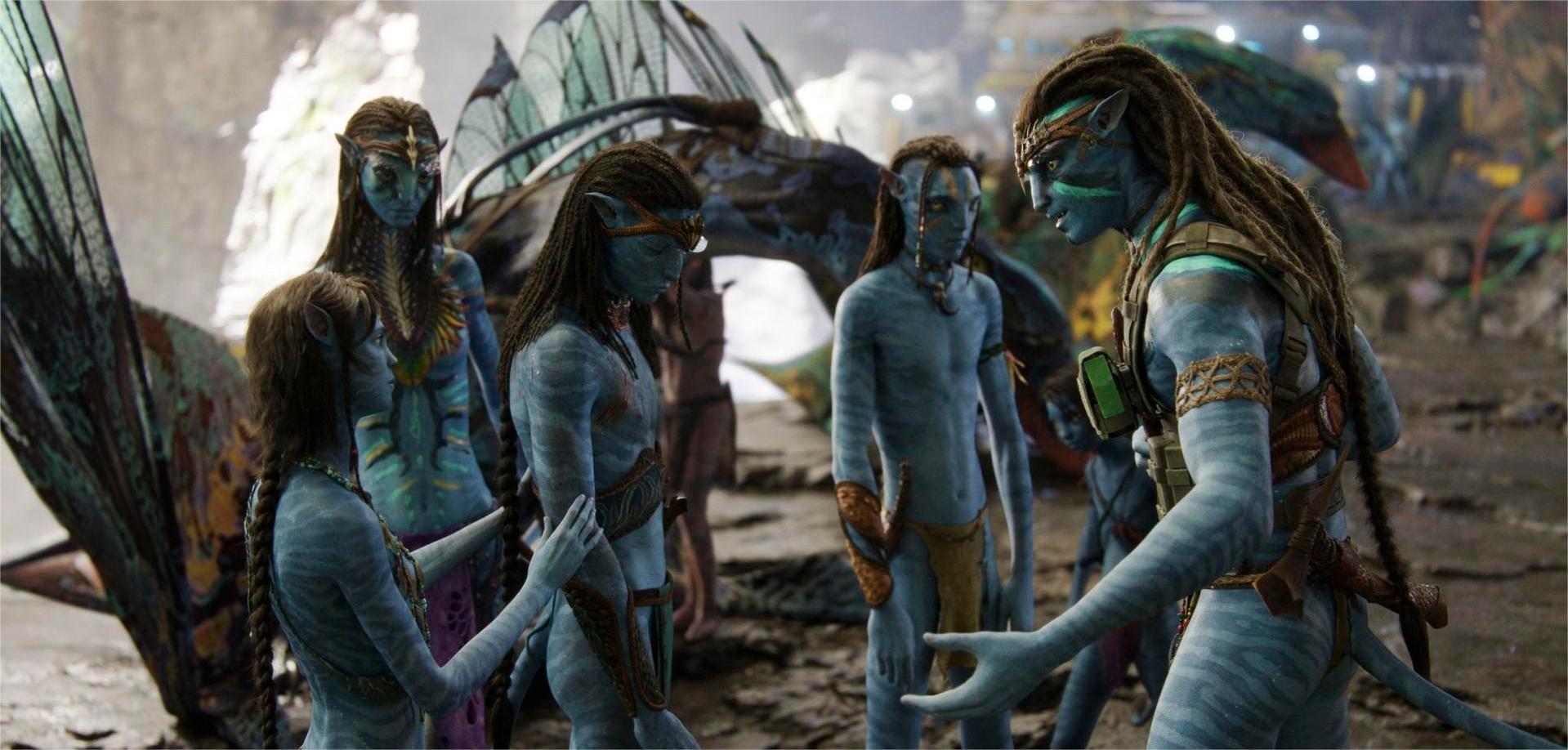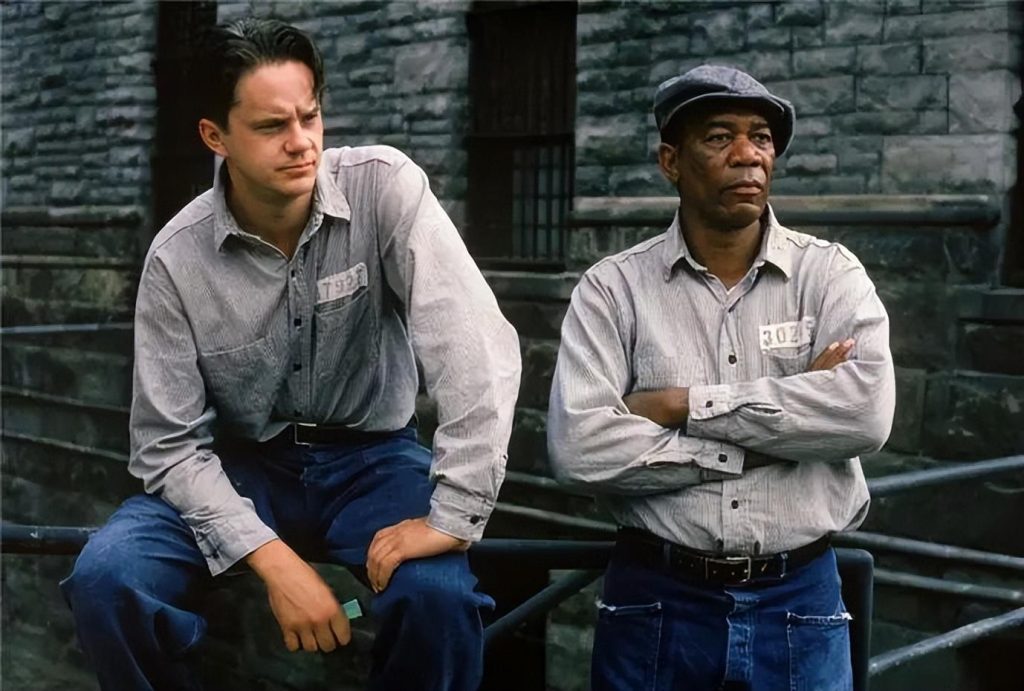Returning to the big screen after 13 long years, Avatar: The Passage of Water evokes many incredibly strong emotions.

The film chose the familiar main setting of the planet Pandora, where a fierce battle takes place in the first part. Jake Sully (Sam Worthington) begins the narrative. He married Netiri (Zoe Saldana), a princess of the Navid tribe. The couple live happily together with their three lovely children and Kiri (Sigurney Weaver), daughter of their late friend Agustin.
The joy of the short time is self-evident, and the earth people have once again erupted in the ambition of revenge after the defeat. Armed with more advanced equipment, these “celestial beings” returned to Pandora with the idea of annexation and turned it into a colony. In the face of immeasurable danger, Jack Sully and his family must accept the escape of food and clothing. Together, they crossed the sea to find shelter in the remote area where the Metkeina aqua people live.
Like its predecessor, Avatar: The Passage of Water breaks few plot breaks. The film focuses on the fierce battle between the hero Jake Sully and the “Heavenly Man”, whose faces represent the aggressive ideas of imperialism.
Since the film was a bit simplistic, James Cameron decided to “water” the script to avoid boredom. The talented director not only leads the audience to explore the sea of wonders, but also creates many deep knots around the emotional story of the family.
He himself used to think that his “aesthetic” was simple and popular. Therefore, the stories he tells are just “strange” and not complicated. This oddity comes from the innovative taste of the basic material, with a very “big”, very “Cameron” character.
The film revolves around the story of Jake Sully’s family
The depth of the script of “Avatar: The Way of Water” is expressed through the depth of the characters’ personalities and how the scriptwriter wedges relationship contradictions. Jake Sully not only has his heart set on his sworn enemy Quaritch (Stephen Lang), but also struggles with the troubles of his adolescent children. On the one hand, he must learn to be a strong leader in the face of sacrifice and loss. On the other hand, the former Marine, like any other man, remains a confused father when it comes to connecting with family.
As a result, Avatar: The Path to Water is in close touch with the audience. The science fiction themes in the prism of James Cameron are still vivid and bright, but are blown up with more realistic plots. In three films, the problem is solved. Even the rebirth of a villain or the emergence of a new character is explained by layers of careful stripping without excessive treatment.
Both “Avatar” films entertain audiences with visual quality. If “Avatar” (2009) is considered a classic monument that shook the human race, then “Avatar” Part 2, released 13 years later, succeeds again.
The graphic parts of the film have been carefully honed and honed. Especially in Imax or 3D format, the film successfully “elevates” the visual experience of God. With vivid and lifelike graphics, Pandora’s fantasy civilization is truly presented in front of the audience and is enlightening to explore.
The Pandora region has also expanded, from spectacular virgin forests, now reaching vast seas. The animal world is once again portrayed as very unique and original. In addition to memorable names like Hammerhead Titan Northus, Tanato, Wiper Wolf, or Banchy Mountain Dragon, Avatar: The Way to Water opens up a new wonder in the ocean, in a variety of ways. It is the Akula shark, the Illu sea dragon, the Turkun whale and many other creatures.
James Cameron introduces many other huge people and civilizations
With the exception of the gorgeous Pandora painting, every action scene in the film was heavily rehearsed, far surpassing its predecessor. The heavyweight battle phase has authenticity and high intensity, making it difficult for the audience to be distracted. It is worth mentioning that the visual director Russell Carpenter changes the Angle of the machine. The more immersed in the unreal landscape, the more nervous the audience becomes, holding their breath to watch the intense competition.
It is no exaggeration to say that Avatar: The Passage of Water brings about the most abundant visual graphic feast in history. James Cameron’s film will undoubtedly be an excellent candidate for the best Picture Oscar this year. In addition, the soundtrack elements of the film are also excellent, and not much different from the Black Panther 2 released before the House of Miracles.
What are the challenges of Avatar: The Passage of Water
As the director’s risky financial gambit, Avatar: Water brings together enough elements to help Cameron succeed commercially. However, this massive project is not yet a perfect movie. Stripped of layers of technology, the work still exposes holes while exploring the depths of the fantasy story.
The first regret is the loss of the villain’s perfect appeal. Avatar (2009) brought in the role of Colonel Miles Quaritch, a peculiar attraction in the film. Despite not having Hannibal Lecter excelling in Silver of Rambus, Quaritch still manages to create a villain that puts intense pressure on the audience’s psyche from start to finish.
In this film, however, despite his return to an identification described as “bigger, greener, stronger,” he ends up appearing more lost and bored. Lacking intelligence and rare cunning, Quaritch’s performance isn’t really convincing, though there’s no lack of room for performance. Moreover, the sudden retreat of the Metkajna tribe in the final battle was not well arranged. While knowing that Cameron wanted to delve into the civil war between the Sully family and the villains, the director’s understanding of “forgetting” may have confused many viewers.
Avatar: Water is a dazzling but imperfect entertainment blockbuster
In the end, the movie’s 192-minute running time is no doubt an obstacle preventing the “box office witch” from hitting the return milestone. As a master of science fiction, Cameron is confident in defending this. This can be seen as a separate “signature” from a director, when Avatar (2009) or Titanic (1997), both leading box office history, had such a long style.
However, when a small part of God lays down money every time to buy a ticket, this becomes his biggest obstacle. What’s more, the revenue from rebuilding viewer channels is highly volatile. In order to turn a profit, James and Avatar’s reputation need to overcome a number of challenges, one of which is the movie-length hurdle.
As the director said, the film is the riskiest “gamble” in the history of cinema. Still, credit must be given to knowing how to “thick” a thin story with the right creative and personal brand of filmmaking language.








